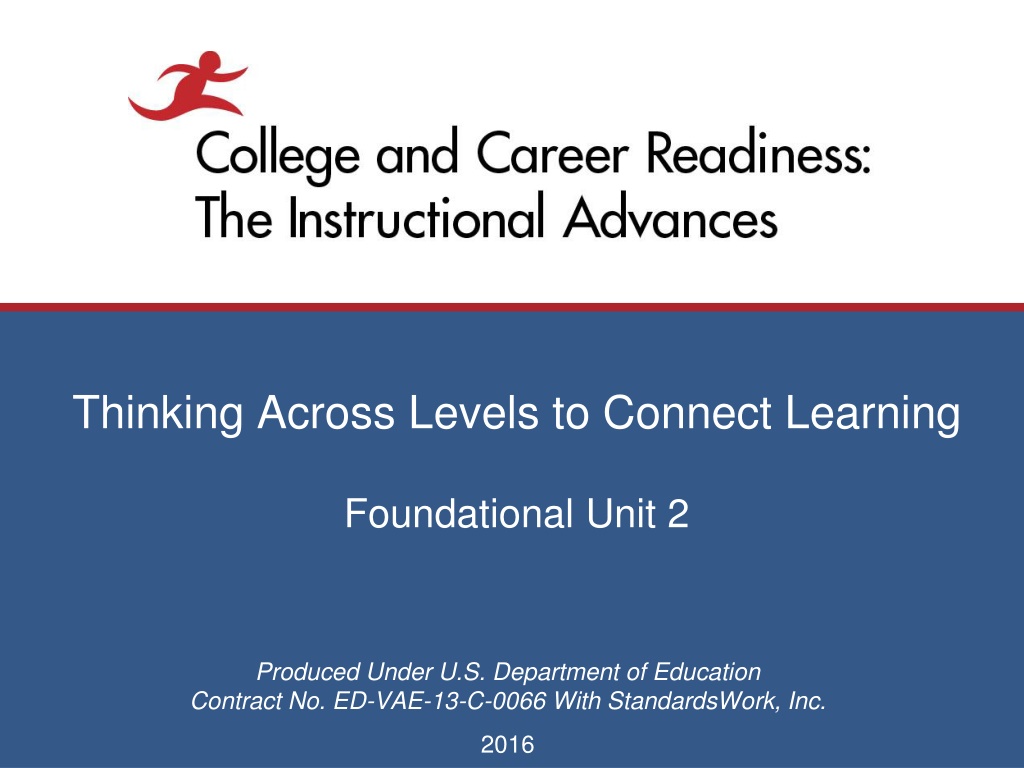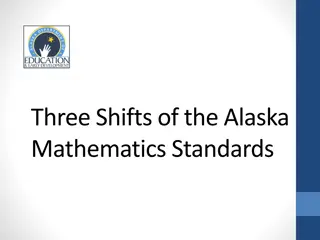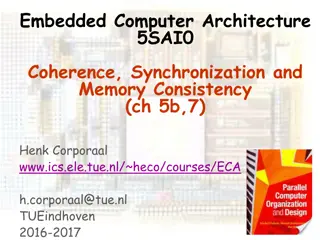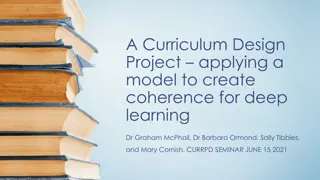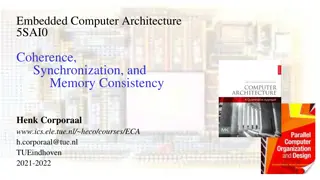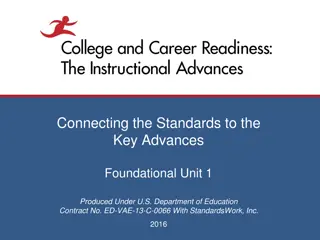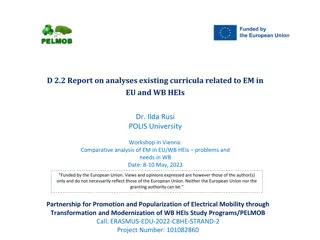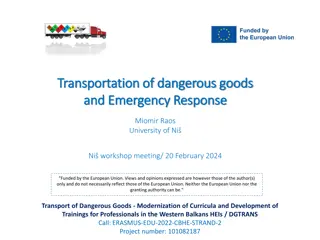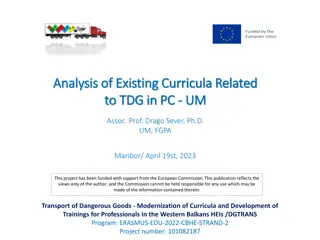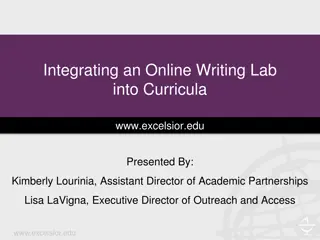Coherence in Standards and Curricula: Connecting Learning Levels
Explore the importance of coherence in standards and curricula, focusing on three key advances prompted by the CCR standards. Understand why coherence is vital for college and career readiness, and discover how it impacts instruction and learning progression. Engage in hands-on practices to work with coherence in mathematics education.
Download Presentation

Please find below an Image/Link to download the presentation.
The content on the website is provided AS IS for your information and personal use only. It may not be sold, licensed, or shared on other websites without obtaining consent from the author. Download presentation by click this link. If you encounter any issues during the download, it is possible that the publisher has removed the file from their server.
E N D
Presentation Transcript
Thinking Across Levels to Connect Learning Foundational Unit 2 Produced Under U.S. Department of Education Contract No. ED-VAE-13-C-0066 With StandardsWork, Inc. 2016
Three Key Advances Prompted by the CCR Standards Focus: Focus strongly where the CCR Standards focus. 1. Coherence: Design learning around coherent progressions from level to level. 2. Rigor: Pursue conceptual understanding, procedural skill and fluency, and application all with equal intensity. 3. 2
Unit 2 Objectives Thinking Across Levels to Connect Learning Understand the research base that explains the importance of coherence in standards and curricula. Extend understanding about the focus of content in each level to include coherence within and across the levels. Develop an understanding of the progressions of critical concepts across the CCR levels as a foundation for developing a coherent and rigorous mathematics curriculum. 3
Rationale for Coherence Relevance and Importance Based on the Research Research emanating from TIMSS and the ACT National Curriculum Survey support the premise that coherent standards and curricula are important for college and career readiness: Coherence allows students to demonstrate new understanding built on foundations from previous study. Coherence prevents standards from being a list of isolated topics. Coherence means that each standard is not a new event, but rather an extension of previous learning. 4
Implications of Coherence on Instruction Content unfolds meaningfully. Connections between concepts are made both within and across the levels. Students and teachers expect knowledge and skills to build and grow. 5
Hands-On Practice Now let s do some work with coherence . . . 6
Materials Directions for Participants Resource: Major Work of the Levels Resource: CCR Standards for Adult Education Resource: Color-coded set of standards cards 7
Directions 1. Identify the progression topic to which each color-coded group of standards belongs: fluency with operations, expressions and equations, or real-world applications. 2. Begin with the fluency (blue) cards. Use knowledge of how concepts and skills build on one another to organize the color-coded cards in a logical order of progression from the lowest to the highest level. 3. Use knowledge of the CCR Standards and the Unit 1 resource, Major Work of the Levels, to help identify the level (A, B, C, D, or E) for each standard on a fluency card. 8
Directions (Continued) 4. Share results with others at your table, and discuss any points of agreement and disagreement. 5. Repeat steps 2 through 4 for expressions and equations (yellow) and real-world applications (green) cards. Work Session 60 minutes 9
Reflections What have you learned from the activity about coherence across the levels? Did you find some examples of coherence within a level? What connections between thinking across the levels and focusing where the standards focus do you see? How might you apply what you learned to your classrooms? Why do you think some standards appear in more than one of the progressions? 15 minutes 10
Next Steps How has participating in this activity changed your thinking about the CCR standards? How will you use the information and understanding you have acquired to improve your teaching practice and student learning? What additional training and tools would strengthen your ability to do so? 11
